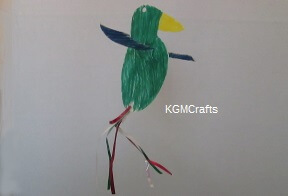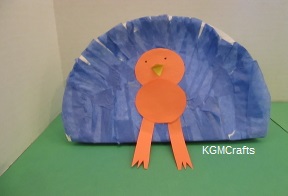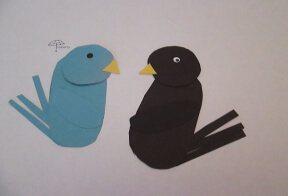Easy Peacock Craft for Kids
by Karen & Grace Morris
This peacock craft for kids is super easy! Even preschoolers can do this easy cut, paste, and color project. Older children can learn some interesting facts.
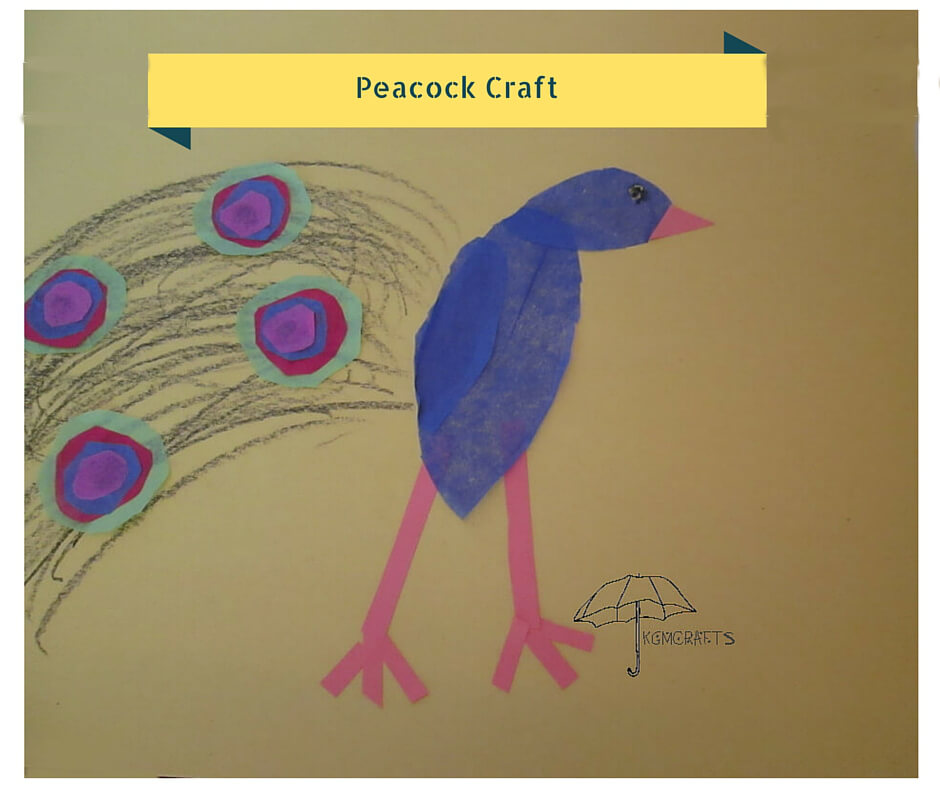
You will need;
- Blue tissue paper
- Green tissue
- Red tissue
- Pink tissue paper
- Orange construction paper
- A background color of your choice
- Black crayon
- Glue stick
Directions to Make a Peacock Craft for Kids
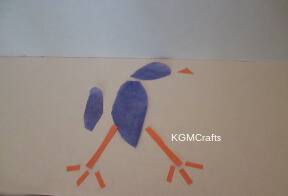
To make a bird shape out of blue tissue paper,
Cut a small oval for the neck,
A large tear for the body,
A small tear shape for a wing
Next, cut out a triangle out of orange construction paper for the break. Also, cut two small orange rectangles for the legs and six rectangles for toes.
With your black crayon, draw an eye on the small blue neck piece.
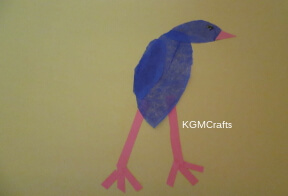
Glue your shapes on a piece of colored construction paper so that it makes a peacock.
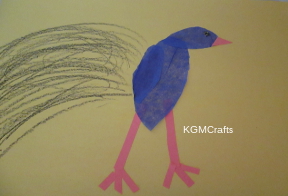
Have your child scribble with a black crayon for the tail feathers.
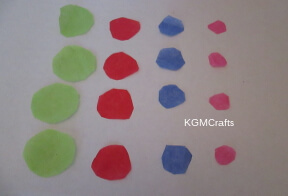
To finish your tail feathers, cut green, red, blue, pink circles made of tissue paper. Cut the circles so that they will fit on top of each other. The green will be the largest. The red will be slightly smaller. The blue will be smaller than the red and the pink will be the smallest.
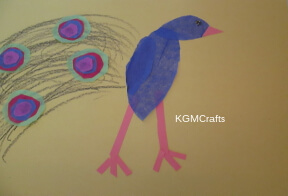
Glue the green piece on first. Place them randomly on the black scribbles. Then stack the other colors from largest to smallest. It looks like the feathers have eyes.
Facts to Read While Making the Bird
The correct name of the bird is peafowl, only the male is called a peacock.
All the birds have a train of quill feathers. The feathers often times look like they have eyespots.
The Indian Peafowl is large at 77 to 89 inches. The male is blue with some green around the face. It has a crown of bluish-green feathers. They can also have rare color variations. One variety has black wings. There is also a white form. The bird is native to India and Sri Lanka.
The feathers of the neck and breast of the Green Peafowl are green and look like scales. Both the males and females have train feathers. After the breeding season, the male does lose his tail feathers and looks like the female's. They are about 72 to 118 inches long, and their tail feathers are longer than the Indian’s. The Green Peafowl lives in Burma and Indochina.
The Congo Peacock has blue feathers tinged with violet and green. It has a red neck, gray feet, and a black tail. The tail has fourteen feathers. The feathers are used in native headdresses. The Congo peafowl is the smallest. It is 25 to 28 inches in length. Not much is known about the Congo species. It was first recorded by Dr. James Chapin in 1936.
So, even a few shapes and scribbles can make a cute peacock craft for kids.
